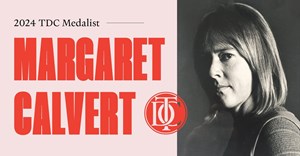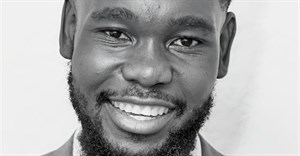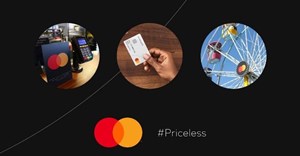Trending




 6 tips to help scale up your small businessGrant Lapping
6 tips to help scale up your small businessGrant Lapping
[Design Indaba 2016] All the feels
They’re not frantically tweeting updates, checking their emails and whispering urgently into their phones. Instead they're sitting comfortably with an approving laugh at the ready, their hands poised to clap and their feet just itching to bounce up and give a standing ovation. And clap and cheer they do. Last year I noted this was the most enthusiastic ‘business crowd’ I've ever been part of. This year's Design Indaba may well top that.
Another full house on day 2 #DI2016 pic.twitter.com/mIZpsoY6jv
— Play Energy Drink (@PlayEnergyDrink) February 18, 2016
MC Michael Bierut adds that it’s all about what design thinking can do to change the world, in a whirlwind of studies and examples that all prove it really is about simple ways of redesigning existing concepts to create a new way of seeing the world. All it takes is a little spark of creativity. The solutions we need are all around us, clarified co-MC Kojo Baffoe.
Eye-openers and envelope-pushers
In this light, we heard from Clara Mar Hernández López of the Rhodes Island School of Design on how to redesign functional buildings into something beautiful, and Kazuya Kawasaki of Keio University’s SFC Design X on the fascinating implications of ‘bio activism and fashion’ – some enthusiasts go so far as to build their own 'home breweries'.
Basia Dżaman waxed lyrical on the oh-so-science-fiction-sounding yet excessively simple idea of robotically programmed stitching, while homegrown Francois Knoetze from UCT’s Michaelis School of Fine Art, UCT presented a fascinating overview of ‘Planet Mongo’, with unsettling realities based on how we mismanage our planet.
One of <>
href="https://twitter.com/FrancoisKnoetze">@FrancoisKnoetze's monsters paid #DI2016 delegates a visit... pic.twitter.com/VhrWgR76rL
— House and Leisure (@houseleisureSA) February 18, 2016
Next, still from the continent, Safia Qureshi and Maxwell Mutanda of Studio [D] Tale encouraged attendees to break the echo chamber – that dream where your voice just isn’t being heard. They gave examples of how they get their voice out there and expressively tell stories through the films they make, interior spaces they design and drawing they reimagine as a form of design activism.
Old school design still has a place
The next set of speakers were from further afield yet seemed to have taken this advice, with almost-80-year-old Margaret Calvert retelling her extended childhood – then and now you’ll find her with coloured pencils at hand, trying to recolour basic thinking.
The audience was enthralled with her examples of typography, signage and design of the UK's modern day road signs. Even former Top Gear presenter James May has had a go at her about some of them, as seen in the video embedded below:
Calvert left us with the message that while technology is important, we shouldn't forget the impact of a handwritten note or a coloured-in postcard and what it means to someone when they can tell you’ve taken the time to do more than hastily type out an oft-repeated phrase and clicked 'send'. That resulted in a standing ovation for Calvert.
Same same, but different
Frederico Gelli from Tatil spoke of how much hard work it takes to reach maximum simplicity, while Elena Arzak of three-Michelin starred Arzak Restaurant spoke of the importance of celebrating culture in design, especially when it comes with a generations-long legacy. She added we should always keep our minds open as inspiration is all around us and can be overwhelming – everything is in a constant state of flux and it’s time to rethink everything from complex gastronomy to simple food preparation.
At #DI2016, renowned chef Elena Arzak says it's time to re-think. "The plate is our pre-text for telling stories." pic.twitter.com/O9Sa39ZrPc
— ARTS THREAD (@ARTSTHREAD) February 18, 2016
Sou Fujimoto added the sentiment that beauty is found in the small details of human behaviour, evident in his large and small scale work – he’s created ‘sculptures for ant-size human beings’ using found objects like potato chips and staples, and created grand-scale designs that incorporate nature into the city. “Consider different possibilities of the same concept,” says Fujimoto, and you just might find your inspiration.
If you attended Design Indaba, chances are your cup of inspiration is overflowing. Share your personal highlights with us in the comment section below.
Our outtake from day 2 at #DI2016: there is no social challenge that can not be solved with clever design thinking. #WinTheRightWay
— Chivas Regal SA (@ChivasRegalSA) February 18, 2016













